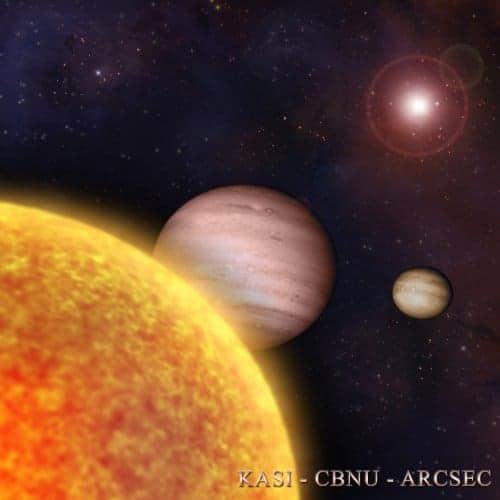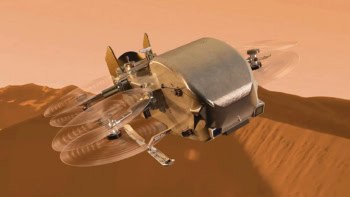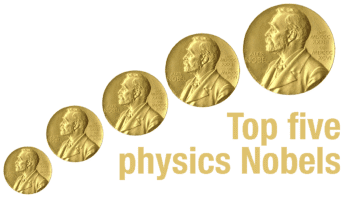
Astronomers have discovered a pair of planets orbiting a star 5000 light years away that together look remarkably like a scaled-down version of our own solar system. The planets, which were spotted using a technique called gravitational microlensing, are both smaller than Jupiter and Saturn and are orbiting a star about half the size of our Sun. The discovery suggests that star systems like our own might be more common than we think.
Astronomers have so far found nearly 250 extrasolar planets using a variety of techniques, such as studying how fast pulsars rotate or watching how a parent star dims as a planet passes in front. But most of these planets were much closer to their parent stars than Jupiter and Saturn are to our Sun, which led astronomers to wonder if star systems similar to ours might be rare.
The two new planets have been discovered by researchers from 11 countries, who are part of the Optical Gravitational Microlensing Experiment (OGLE) (Science 319 927). The other teams involved are MicroFUN, MOA, PLANET and RoboNet. The larger planet is a slightly smaller version of Jupiter, having about 70% of its mass. The other planet is only about 30% of the mass of Jupiter, making it closer in size to Saturn.
The new planets are also much closer to their parent star. In our solar system, Jupiter lies about 5.2 times as far from the Sun as the Earth does — i.e. it is a distance of 5.2 Astronomical Units (AUs) from the Sun — while Saturn lies about 9.5 AUs away from the Sun. In the new solar system, however, the larger planet is 2.3 AUs from its sun, while the smaller planet is 4.6 AUs out.
The sun at the heart of the new solar system is also dimmer than our Sun but the temperatures on the two planets are probably similar to those on Jupiter and Saturn because they are closer to their star.
Gravitational microlensing
The star at the heart of the new planetary system is known as OGLE-2006-BLG-109L and was found when it crossed in front of a more distant star being observed from Earth. Thanks to gravitational microlensing, the gravity of the star and its orbiting planets acted as a lens, bending and magnifying the light from the background star.
For two weeks in March and April 2006, OGLE-2006-BLG-109L magnified the light from the background star by a factor of 500. The properties of the star and the planets were then determined by analyzing how the complex patterns of the magnified background light change as the planetary system passes in front of the background star.
Solar-system analogue
Lead author Scott Gaudi told physicsworld.com that he and his colleagues should be able to detect systems similar to one they found “fairly regularly” — if such systems are indeed common. “As far as finding systems with Earth-like planets, in the parts of their systems where we expect liquid water, this will have to wait until a space-based mission,” he says.
“Our method is currently sensitive to Earth-mass planets with longer orbits, that is at several astronomical units (AU),” he added. An AU is the distance from the Earth to the Sun. “If these are common, we should be finding them very soon.”
Common throughout our Galaxy
The new planets are only the fifth and sixth to have ever been detected using gravitational microlensing and the planets could not have been found with any other technique. “This is the first case in which a Jupiter-mass planet was detected where we had significant sensitivity to additional planets,” said Gaudi. “You could call it luck but I think it might just mean that these systems are common throughout the Galaxy.”
The astronomers say they now have data from another six new planets, discovered last year, which they will be analysing over the next few months. They will also continue looking for other new planets as soon as the new season of observations begins. “In the more distant future, we hope to set up a ‘next generation’ microlensing survey that will detect Earth-mass planets at the rate of several per year,” revealed Gaudi. “We might even be able to get a complete census of planetary systems throughout our Galaxy.”




